Environment and Tourism in the Caribbean
The environment and tourism in the caribbean.
Mainly, Caribbean ecological resources are basic and natural, including sand, sun, and the sea. Apart from the sun, the resources are subject to damage and depletion, as threats can arise from both within and outside the region. Typically, the magnitude of damage caused by minor to severe threats hurts the entire endowed resources (Price et al., 2020). For instance, waste disposal and directing untreated water into the sea affect living organisms in the Islands that attract tourists. Caribbean Island relies on sea-sand and sun tourism, making a mon-product area. Furthermore, these supporting endowments are subject to exhaustion.

The Importance of Tourism Economy in the Caribbean
In the Caribbean, tourism is a vital element of the economy, especially where services count for more than 80% of the GDP. Impacts transmitted by tourism to the local economy are enormous, starting with wages paid for labor, sales of local goods and services, and taxes. The tourist industry has a high propensity to import commodities that are consumed through the activities involved. Consequently, the country’s economy is supported through foreign exchange (Cannonier & Burke, 2019). Business investing in tourism gives the local government opportunity to make income through taxes.
For many years, the Caribbean economy has relied on agriculture to support itself and generate income for the nation. Unfortunately, the recent decline in agriculture performance in certain crops such as sugar, bananas, or vanilla has caused a significant impact. Owing to tourism Caribbean economy overcomes the problem through money earned from tourist services (Price et al., 2020) Tourism has brought enlightenment to the economy, especially in addressing environmental issues. The Caribbean has fallen victim to some tragedies over the past decades, such as earthquakes or hurricanes. During such time, travelers have helped the region adjust through tourism money.
Why Does the Physical Geography of the Caribbean Attract Tourists?
The Caribbean’s physical geography makes the region a prime location for tourists. Features such as warm coastal waters and climate, mountains, volcanoes, and many islands draw people from everywhere to the region. Typically, the Caribbean has over 7000 islands that are tiny rocky pieces of land, and others are full of corals (Cannonier & Burke, 2019). The largest Islands are Jamaica, Cuba, Puerto Rico, and Hispaniola. In most islands, mountains and volcanoes are common features that attract people.
Most features in the Caribbean geography attract visitors for tourism and sporting activities. On the beaches, tourists enjoy the view of the sea while others prefer rainforests where they can hike, practice canopy rides, or zip-lining (Cannonier & Burke, 2019). Certain sides of the Jamaican and Virgin Islands have greenery of the forest, while underneath the waters, the Caribbean is full of coral reefs rich in marine life.
Environmental Issues impacting the Caribbean’s Viability of Tourism Economy
In the coastal regions, climate change influences water volume such that rising sea levels make beaches submerge. Travelers who enjoy such sites get discouraged while the cost of protecting and maintaining waterfronts goes high (Sheller 2020). Surge storms are a risk to tourism facilities and hinder activities such as surfing. Due to precipitation, water shortage creates competition between tourism and other sectors, while desertification triggers wildfires threatening infrastructures. Sometimes flooding is common due to heavy precipitation, pausing the risk of damage to tourism facilities such as historic assets.
Surface temperatures cause an increased coral bleaching and degradation of marine resources. Thus, tourist activities in affected places are limited. Climate change affects the loss of natural attractions or available species and possibly causes outbreaks of diseases (Sheller, 2020). It discourages tourism activity in Caribbean areas. Sometimes soil changes moisture levels due to higher temperatures, leading to the loss of archeologic assets or natural resources that attract tourists.
Negative Impacts of Tourism Economy on the Caribbean Environment
Attractive landscape sites such as lakes, mountains, or slopes are transitional areas. A typical impact of tourism is the disruption of the ecosystem where living organisms mutually interact. Tourism causes severe pollution in terms of air, noise, land, and water. Solid waste is common and in large concentrations. Sewages pollute the sea or ocean, an acute threat to coral reefs (Price et al., 2020). Land degradation in the Caribbean is common due to the need to construct tourism facilities of infrastructure. Forests suffer negative impacts as well.
Cannonier, C., & Burke, M. G. (2019). The economic growth impact of tourism in Small Island Developing States—evidence from the Caribbean. Tourism Economics, 25(1), 85-108. Web.
Price, M., Rowntree, L., Lewis, M., & Wyckoff, W. (2020). Globalization and Diversity: Geography of a Changing World (6th ed.). Pearson.
Sheller, M. (2020). Reconstructing tourism in the Caribbean: Connecting pandemic recovery, climate resilience and sustainable tourism through mobility justice. Journal of Sustainable Tourism, 1-14. Web.
Cite this paper
- Chicago (N-B)
- Chicago (A-D)
StudyCorgi. (2022, June 20). Environment and Tourism in the Caribbean. https://studycorgi.com/environment-and-tourism-in-the-caribbean/
"Environment and Tourism in the Caribbean." StudyCorgi , 20 June 2022, studycorgi.com/environment-and-tourism-in-the-caribbean/.
StudyCorgi . (2022) 'Environment and Tourism in the Caribbean'. 20 June.
1. StudyCorgi . "Environment and Tourism in the Caribbean." June 20, 2022. https://studycorgi.com/environment-and-tourism-in-the-caribbean/.
Bibliography
StudyCorgi . "Environment and Tourism in the Caribbean." June 20, 2022. https://studycorgi.com/environment-and-tourism-in-the-caribbean/.
StudyCorgi . 2022. "Environment and Tourism in the Caribbean." June 20, 2022. https://studycorgi.com/environment-and-tourism-in-the-caribbean/.
This paper, “Environment and Tourism in the Caribbean”, was written and voluntary submitted to our free essay database by a straight-A student. Please ensure you properly reference the paper if you're using it to write your assignment.
Before publication, the StudyCorgi editorial team proofread and checked the paper to make sure it meets the highest standards in terms of grammar, punctuation, style, fact accuracy, copyright issues, and inclusive language. Last updated: June 20, 2022 .
If you are the author of this paper and no longer wish to have it published on StudyCorgi, request the removal . Please use the “ Donate your paper ” form to submit an essay.
Behind the Smile: The Working Lives of Caribbean Tourism Essay
Introduction, racism and discrimination: the major theme that emerges in gmelch’s book, examples to support the theme in the anthropology, the class concept as illustrated in gmelch’s book, works cited.
George Gmelch takes an interesting view of tourism, not as done by most others. When tourism is discussed, the tendency is to focus on the physical attributes of the destination: clean beaches, glorious sunsets, breathtaking scenery- or on the tourists themselves. There is very little attention paid to the locals who are normally the same people acting as taxi drivers, chefs, hotel maids, beach boys, hotel managers, porters, and waiters/waitresses. This group is normally relegated to the background. Gmelch has taken it upon himself to interview and record the experiences of twenty-one of these workers and hence, shed light on how they react to their foreign visitors and how these visitors impact their lives.
The format used by Gmelch is to divide the interviews into five broad categories as the five major work areas in which the locals would encounter the tourists namely at the airport, the hotel, at the beach, and lastly by taking points from the government.
A major theme that emerges subtly from Gmelch’s book, I believe, is that of racism and discrimination. This is because of the attitudes that most first-time visitors have towards the natives, seeing them as backward and uncivilized and more often than not, as being just the means to achieve their pleasures.
The workers at the airport are the ones who get to see the incoming tourists at their worst because apart from the newcomers being frazzled with jetlag, the heat that they may be unaccustomed to, and being subjected to long cues, most still hold on to the misconceptions they have formed or heard about the country they are about to visit.
As explained by one interviewee who works at the currency exchange counter, some visitors expect an attitude of obeisance and servitude from the locals. It throws them off balance when they find it is not so and they may resort to making callous remarks about the inferiority of the black man, slavery, and colonialism (pg 51). Such negative attitudes indicate the low esteem in which some tourists hold the local blacks, a sign of racism.
It is easier when the tourists are leaving because they have experienced Barbados and loved it, and most only have pleasant memories to take home (pg. 51).
At the hotels where the tourists stay, some workers experience derision from the visiting tourists, having to put up with their crude behavior. Though most workers are not aware of it, their visitors do things that they would not do within their own homes, such as living damp towels and rubbish for the cleanup crew to come and pick up. Sheralyn, a hotel maid, says that the visitors can be very messy but they have to clean up without complaint (pg 67). It means that the tourists have very little respect for those who come in after them.
Initially, the workers tend to shy away from the tourists because they are so ‘different’; they talk differently and they even walk differently (pg 191). The workers are afraid that communicating with the tourists may be difficult hence at first they hesitate. But with time, they get used to this and build enough confidence to chat with them (pg. 191).
Though workers who interact with tourists generally find them agreeable, what puts them off is those visitors who are ignorant and/or snobbish. An interviewed beach vendor said that what puts him off are those tourists who say that before their visit, they had never had of Barbados, then go ahead to ask all sorts of questions that should have been common knowledge (pg. 191). It irritates him that such tourists expect a barbaric uncivilized place with ‘…people running around with a cloth about de waist’ (pg 191). For taxi driver Trevor Mapp, being asked if the island has running water and television is an occurrence that he has to occasionally put up with.
The class concept does emerge very clearly in this anthropology. The locals and the tourists are two very different sets of people, starting right from how the latter treat the former down to the lifestyle of the visitors when they are in the country as compared to that of the locals. Because the tourists have the money, they also have the power thus the differential treatment. They eat the best foods, use the best transport and luxury hotels, and experience a lifestyle that a local may never get to enjoy. There is an apparent division of class with the tourists coming out on top. The tourists also get away with things that a Barbadian would never dream of doing such as walking around semi-nude in bikinis.
One thing that is apparent, from Gmelch’s interviews, is the envy that the local feel towards the seemingly affluent tourists who are openly willing to flaunt their money. What the locals do not grasp, as explained by one interviewee, is that these seemingly carefree individuals have saved for a whole year, if not a lifetime, to be able to afford a week’s pleasure away from their humdrum existence (pg. 33). Most locals assume that the life of luxury the tourists live while on holiday is the same one they have abroad.
This, as observed by Gmelch, may have a negative impact in the sense that as Barbadians strive to imitate the lavish lifestyles of their guests, using them as benchmarks of how one is supposed to live, they may strain their already overburdened financial ropes (pg. 33).
The sum of it is that unlike in other service sectors, the interaction between the tourist and the local worker normally goes above and beyond the impersonal, uninvolved level. As an interviewed bartender put it, in the hospitality industry one has to ‘…be friendly and speak properly.’ Giving the traits of a good bartender he says that one has to be ‘…a therapist, counselor, pimp, lover man, ambassador, and even a bush doctor’ (pg 72).
He is speaking for all the workers serving tourists in Barbados, whether they be clearance officials, money changers, taxi drivers, receptionists, hotel managers, beach boys, or tour guides.
In every society, tourism has its negative and positive impacts. The Caribbean island of Barbados is no exception. While the locals may benefit from the foreign currencies brought in by the tourists that are not all the gain from their foreign visitors. They learn more about the cultures of these people; they get a world perspective, albeit a narrower one. For some, dealing with international tourists gives them confidence, for others, it gives them an aspiration to live better lives. All in all, whether the tourists know it or not, they leave their marks on the lives of the Barbados locals who serve them with such sincere steadfast smiles.
Gmelch, George. Behind the smile: the Working Lives of Caribbean Tourism . Indiana: Indiana University Press, 2003. Print.
- Chicago (A-D)
- Chicago (N-B)
IvyPanda. (2024, February 13). Behind the Smile: The Working Lives of Caribbean Tourism. https://ivypanda.com/essays/behind-the-smile-the-working-lives-of-caribbean-tourism/
"Behind the Smile: The Working Lives of Caribbean Tourism." IvyPanda , 13 Feb. 2024, ivypanda.com/essays/behind-the-smile-the-working-lives-of-caribbean-tourism/.
IvyPanda . (2024) 'Behind the Smile: The Working Lives of Caribbean Tourism'. 13 February.
IvyPanda . 2024. "Behind the Smile: The Working Lives of Caribbean Tourism." February 13, 2024. https://ivypanda.com/essays/behind-the-smile-the-working-lives-of-caribbean-tourism/.
1. IvyPanda . "Behind the Smile: The Working Lives of Caribbean Tourism." February 13, 2024. https://ivypanda.com/essays/behind-the-smile-the-working-lives-of-caribbean-tourism/.
Bibliography
IvyPanda . "Behind the Smile: The Working Lives of Caribbean Tourism." February 13, 2024. https://ivypanda.com/essays/behind-the-smile-the-working-lives-of-caribbean-tourism/.
- The Core Foundation of Economic Prosperity in Barbados
- Maslow’s Hierarchy of Needs in Relation to the Hospitality Industry
- Canadian Flair Bartender Gavin Macmillan, His Personality and Motivation
- Caribbean Rum: History and Culture
- Respectability in the Eyes of the Colonizer
- Climate Change and Its Effects on Tourism in Coastal Areas
- Revitalization of the Caribbean Islands After the Pandemic
- The Rebellion of Runaway Slaves in Jamaica
- "Proto-Peasant Revolts?" by Craton
- Hurricane Elsa: Characteristics, Causes, and Damages
- Tourism Satisfaction and Loyalty: From UK to Shanghai
- Environment Quality and Tourism in Chinese Cities
- Home Exchange and Implications for Tourism Management
- Codes of Conduct: Criticisms and Influence on Tourist Behavior
- Dark Tourism as a Contemporary Issue in Hospitality

Your online Caribbean study group
- CXC CSEC exam guide: Social Studies
CXC CSEC Social Studies exam guide - Section C3: Tourism
CXC CSEC Social Studies Exam Guide: OPTIONS: Section C3: Tourism
Add new comment
this will be of great help...
Finally... I am finish...
As I am not good at expressing myself in language as I am bit different... I am hoping that the essay part in the section C will be something I am familiar with... I guess from what I have studied so far... I believe I should hope for the best and put all my efforts into this... I thank you people for making this site because I was able to finish off what I have not study in the classroom :)!
Social Studies
This page is of great help because it help me to study what I did not finish doing in class.
social studies
this is very helpful thank you so much for sharing
this is very help full, but i think i need to put in more effort in what i do.. an i guess i'll succeed.
with a graphic centre, what are quality control measures to be adhered to?Also,what is its level of production?
how to do this?
This is helpful
This question is for testing whether or not you are a human visitor and to prevent automated spam submissions.

Passing Thru Travel
15 Eco-Islands 2024 – Sustainable Island Retreats
Posted: February 24, 2024 | Last updated: February 24, 2024

In an age where sustainable travel is not just a preference but a necessity, islands around the world are leading the way in eco-friendly tourism. These destinations offer more than just stunning beaches and clear waters; they are committed to preserving their natural beauty and cultural heritage. From the remote corners of the Pacific to the vibrant ecosystems of the Caribbean, this guide explores 15 of the world’s most sustainable island getaways. Each of these islands offers a unique blend of responsible tourism practices and unforgettable natural experiences, ensuring that your visit leaves a positive impact.
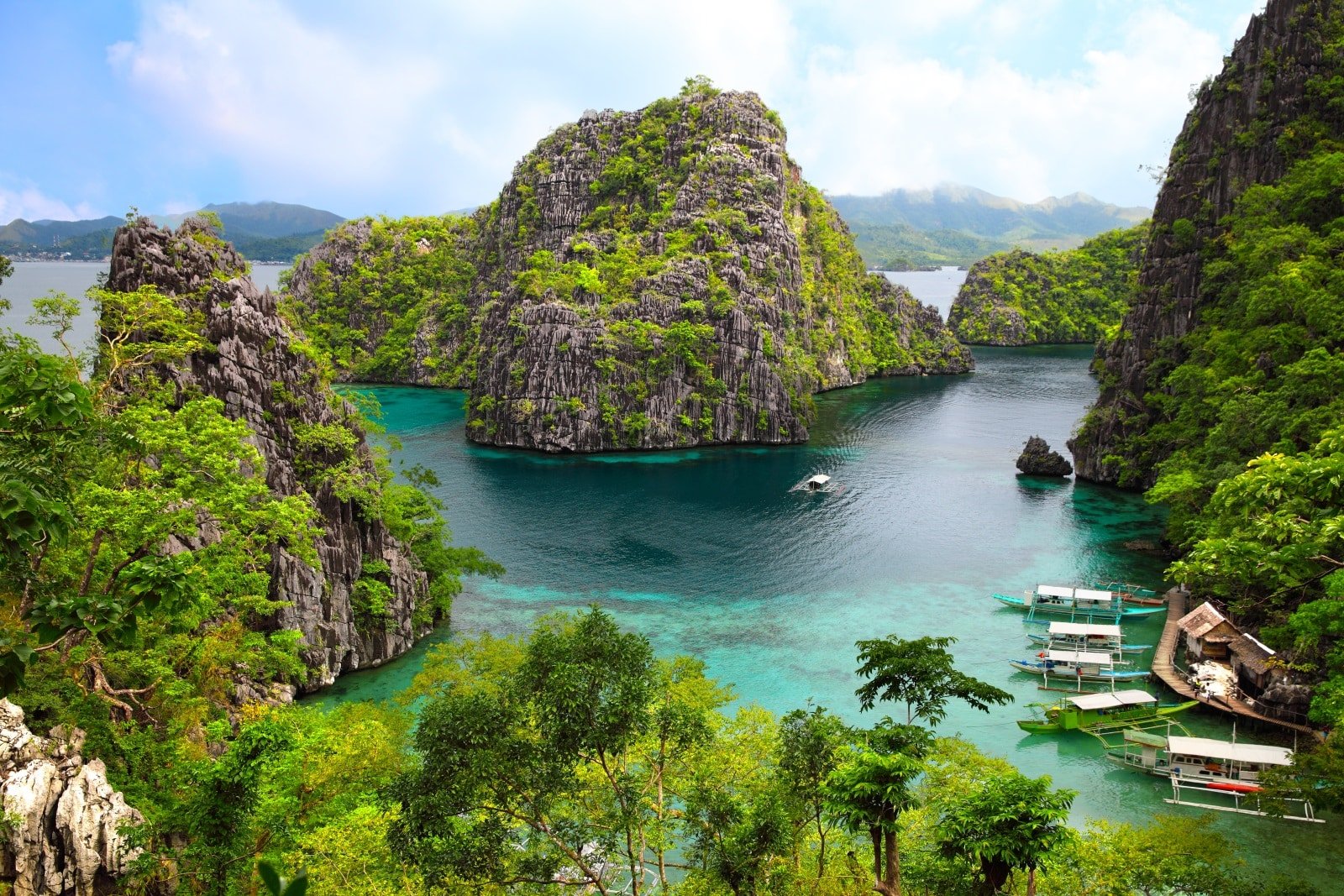
1. Palawan, Philippines
Palawan, the Philippines’ ecological marvel, is a testament to sustainable island living. This lush paradise, with its crystal-clear waters and rich marine life, is a haven for eco-conscious travelers. The island’s efforts in conservation are evident in attractions like the UNESCO-listed Puerto Princesa Subterranean River National Park and the sustainable luxury resorts in El Nido. Community-based tourism initiatives here not only protect the environment but also support local livelihoods. Visitors can engage in snorkeling, island-hopping, and exploring hidden lagoons, all conducted with respect to the natural surroundings.
Insider’s Tip: Engage in community-led tours for an authentic and responsible exploration of the island.
When To Travel: The dry season from November to May offers the best weather.
How To Get There: Fly to Puerto Princesa or El Nido from major cities in the Philippines.

2. Galapagos Islands, Ecuador
The Galapagos Islands, a unique showcase of biodiversity, are a global model for sustainable tourism. The Ecuadorian government and local operators maintain strict controls to preserve the islands’ delicate ecosystems. Visitors can marvel at the unique wildlife and volcanic landscapes while contributing to conservation efforts. The islands offer a range of eco-friendly accommodations and tours that prioritize environmental responsibility. Activities include guided nature walks, snorkeling with sea lions, and observing the famous Galapagos tortoises in their natural habitat.
Insider’s Tip: Opt for smaller, eco-certified cruises to minimize your environmental impact.
When To Travel: Visit from June to December for cooler temperatures and active wildlife.
How To Get There: Fly to Baltra or San Cristobal from mainland Ecuador.
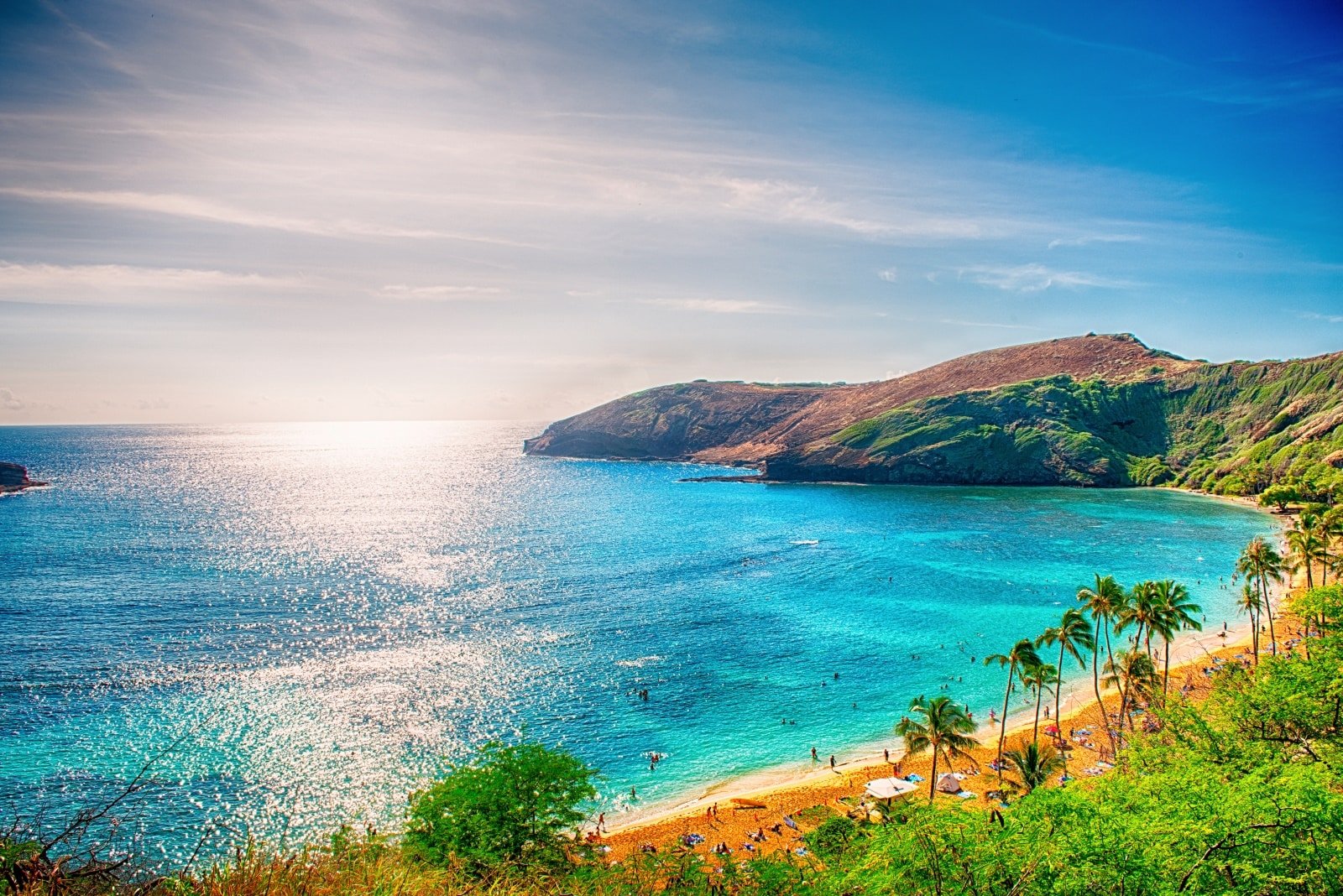

3. Maui, Hawaii, USA
Maui, the second-largest Hawaiian island, is a leader in sustainable tourism practices. The island’s lush landscapes, from the volcanic Haleakal? National Park to the Road to Hana, are maintained through eco-friendly initiatives. Visitors can enjoy organic farm-to-table dining, solar-powered water adventures, and cultural tours that respect the local heritage. Maui’s commitment to preserving its natural and cultural resources makes it a prime destination for eco-conscious travelers. The island’s diverse ecosystems, including rainforests and coral reefs, offer nature enthusiasts a wide range of activities.
Insider’s Tip: Participate in a beach clean-up to give back to the community.
When To Travel: The shoulder seasons of April to May and September to November offer great weather with fewer crowds.
How To Get There: Fly directly to Kahului Airport on Maui.
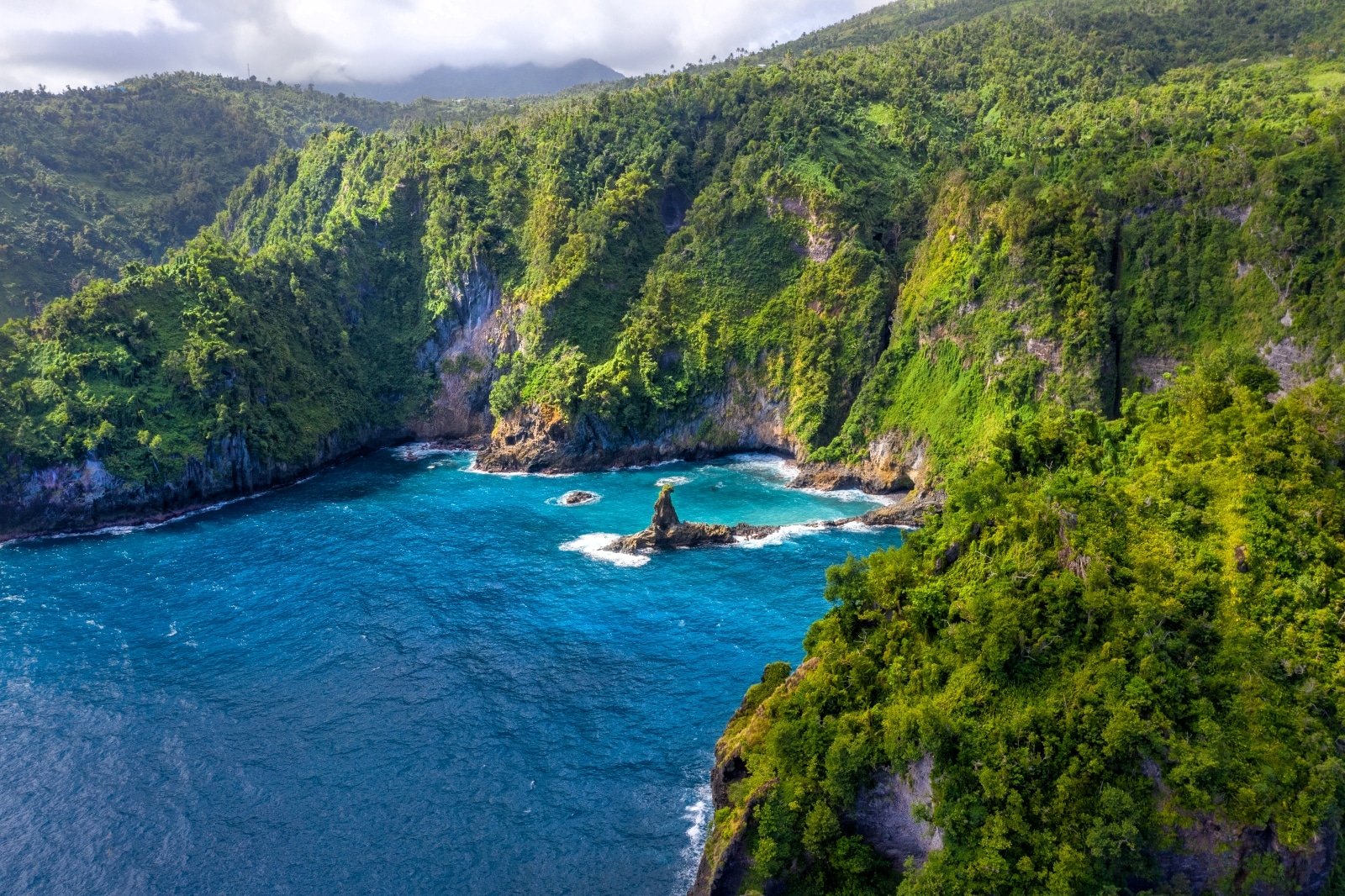
4. Dominica, Caribbean
Dominica stands out in the Caribbean for its commitment to eco-tourism. Known as the “Nature Island,” it boasts lush rainforests, hot springs, and a rich array of wildlife. The island’s eco-lodges and nature tours focus on conservation and community involvement, offering immersive experiences like whale watching and hiking to the Boiling Lake. Dominica’s rugged terrain and natural hot springs provide a unique backdrop for sustainable adventures, from birdwatching to exploring hidden waterfalls.
Insider’s Tip: Explore the island’s unique waterfalls and natural hot springs for a relaxing experience.
When To Travel: The dry season from December to April is ideal for exploring.
How To Get There: Fly to Douglas-Charles Airport, with connections from major Caribbean hubs.
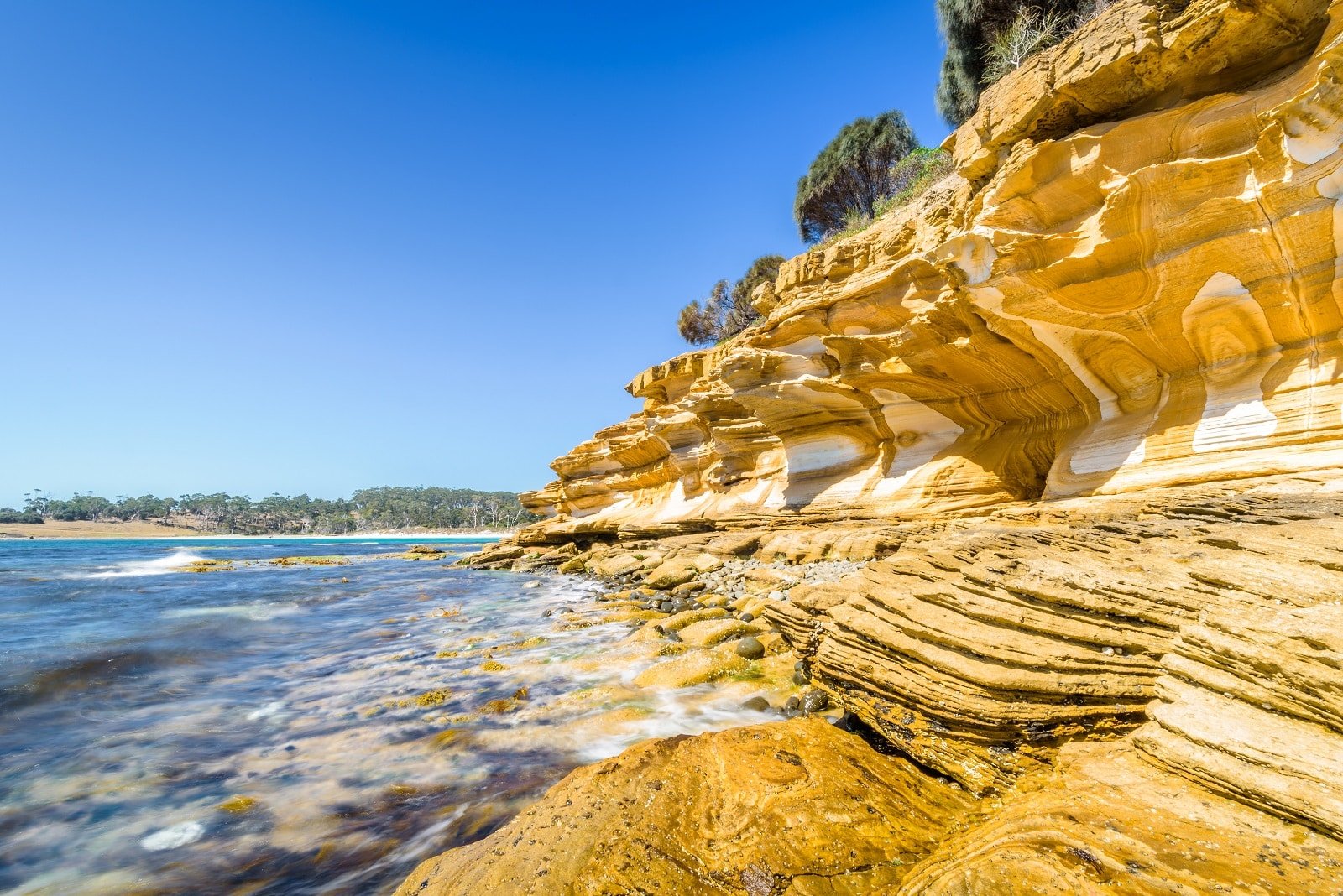
5. Tasmania, Australia
Tasmania, an island state of Australia, is a treasure trove for eco-conscious travelers. Over 40% of its land is protected as national parks and reserves, offering a diverse range of pristine environments. From the rugged wilderness of the Tasmanian Wilderness World Heritage Area to the serene beauty of Wineglass Bay, Tasmania is a haven for nature lovers. The island is committed to sustainable practices, evident in its eco-lodges and conservation projects. Visitors can engage in eco-friendly activities, such as hiking in ancient rainforests, watching wildlife, and exploring the island’s unique geology.
Insider’s Tip: Visit the Tasmanian Devil sanctuaries to learn about conservation efforts for this iconic species.
When To Travel: The summer months of December to February are ideal for outdoor activities.
How To Get There: Fly to Hobart or Launceston from major Australian cities.
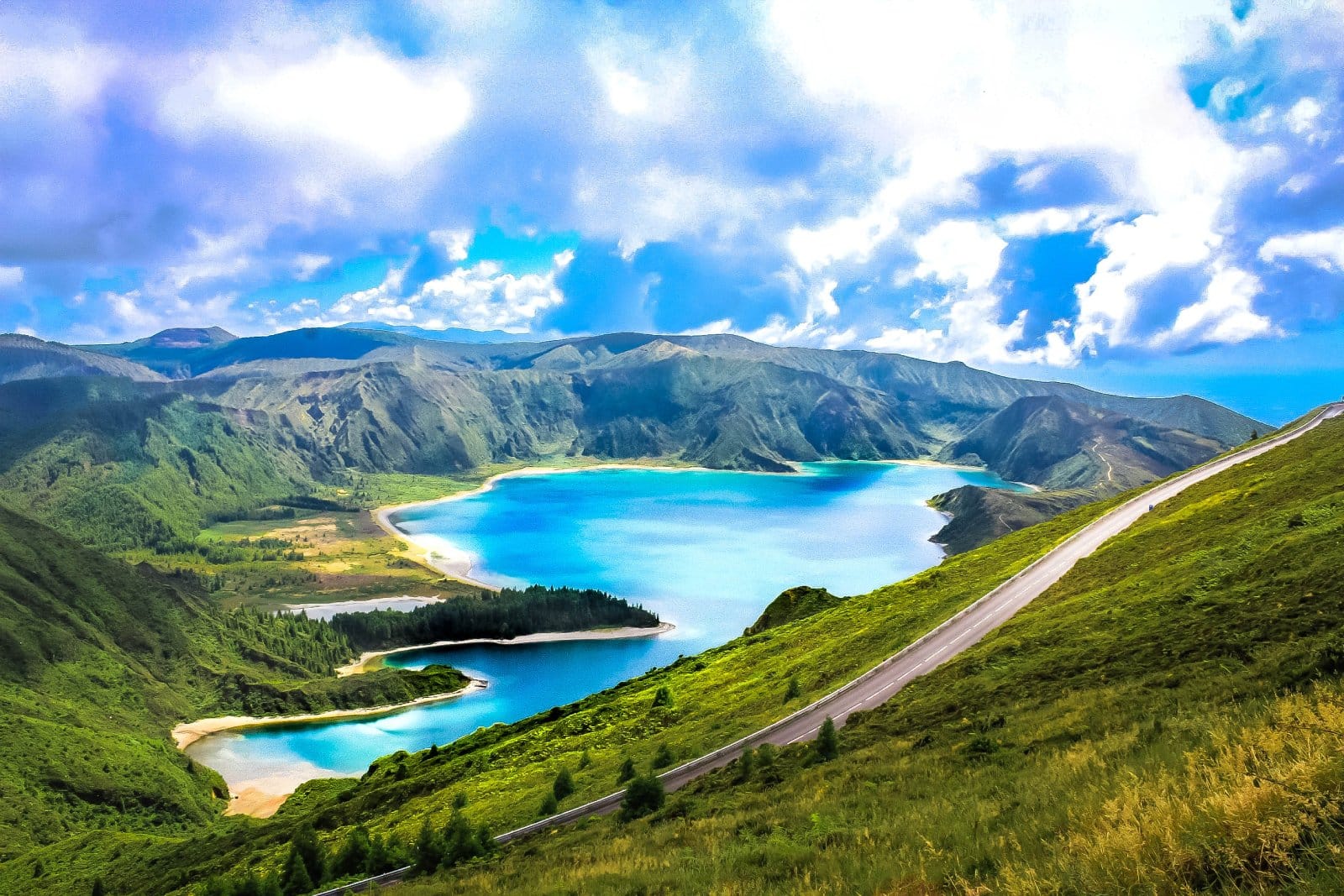
6. Azores, Portugal
The Azores, a group of nine volcanic islands in the North Atlantic, are a model for sustainable tourism. The islands’ stunning landscapes, from green pastures to thermal springs, are complemented by eco-friendly accommodations and activities. Whale watching, hiking, and diving in the Azores not only offer incredible experiences but also support conservation efforts. The islands’ commitment to sustainability includes renewable energy initiatives and the protection of marine life.
Insider’s Tip: Try geothermal cooking, a unique culinary experience on the islands.
When To Travel: Visit from April to October for the best weather and whale-watching opportunities.
How To Get There: Fly to Ponta Delgada on São Miguel Island from Lisbon or other European cities.
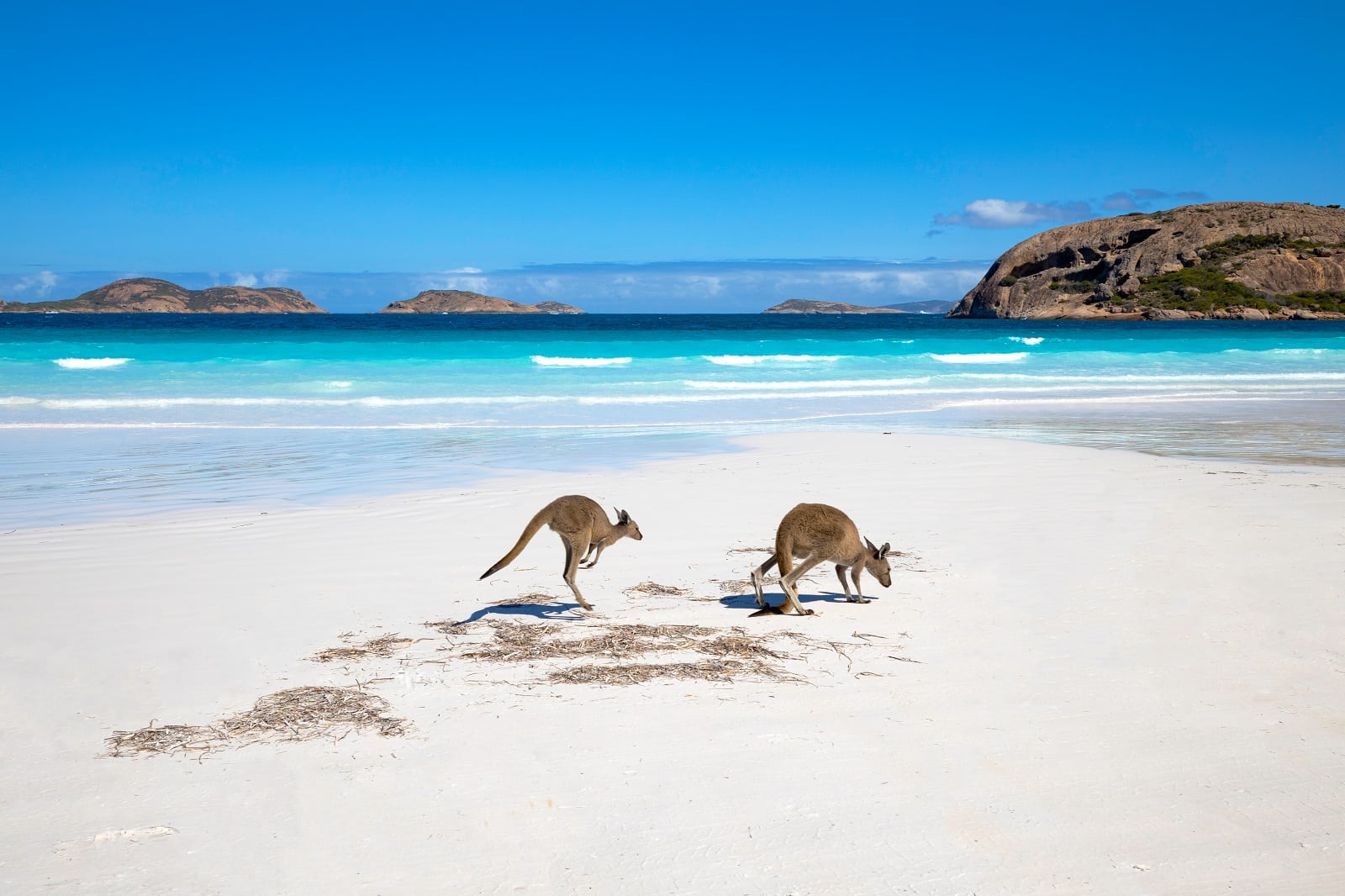
7. Kangaroo Island, Australia
Kangaroo Island, off the coast of South Australia, is a wildlife sanctuary and a leader in sustainable tourism. The island’s diverse habitats are home to many native Australian species, protected through eco-friendly practices. Visitors can enjoy guided wildlife tours, conservation experiences, and stays in eco-lodges. The island offers a unique opportunity to see Australian wildlife in their natural habitat, such as kangaroos, koalas, and echidnas.
Insider’s Tip: Join a nocturnal tour to see the island’s wildlife in their natural habitat, including kangaroos and echidnas.
When To Travel: Visit from September to March for the best wildlife viewing.
How To Get There: Fly to Kingscote Airport on Kangaroo Island or take a ferry from Cape Jervis.
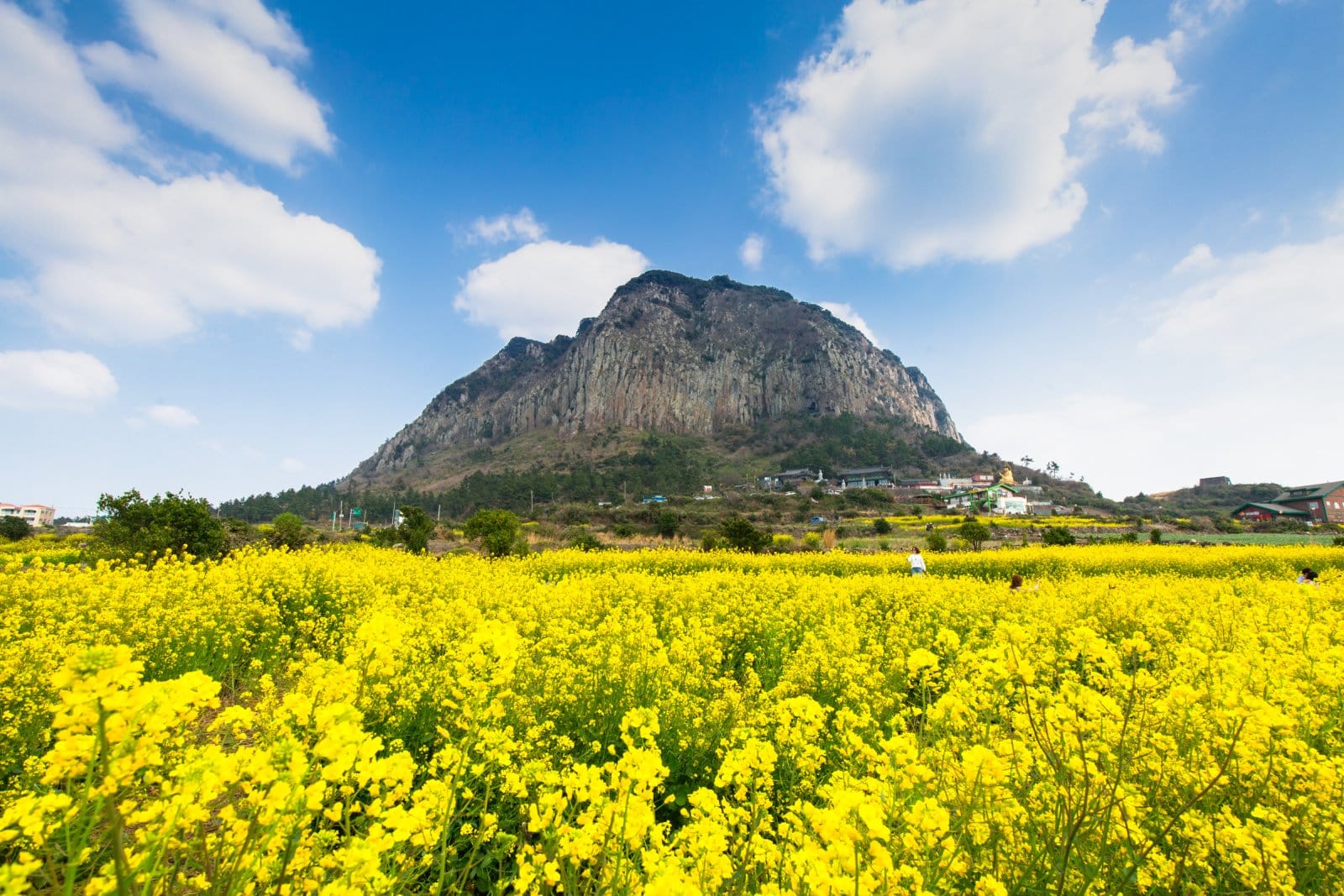
8. Jeju Island, South Korea
Jeju Island, off the southern coast of South Korea, is known for its natural beauty and commitment to sustainability. The island’s UNESCO-listed Geopark showcases unique volcanic landscapes, waterfalls, and beaches. Eco-friendly initiatives across the island promote sustainable agriculture and tourism, making it a great destination for environmentally-conscious travelers. Activities include exploring lava tubes, hiking up Hallasan Mountain, and visiting traditional Korean villages.
Insider’s Tip: Explore the island’s lava tubes and craters for a unique geological experience.
When To Travel: Spring (April to June) is ideal for mild weather and beautiful cherry blossoms.
How To Get There: Fly to Jeju International Airport from various cities in South Korea and Asia.
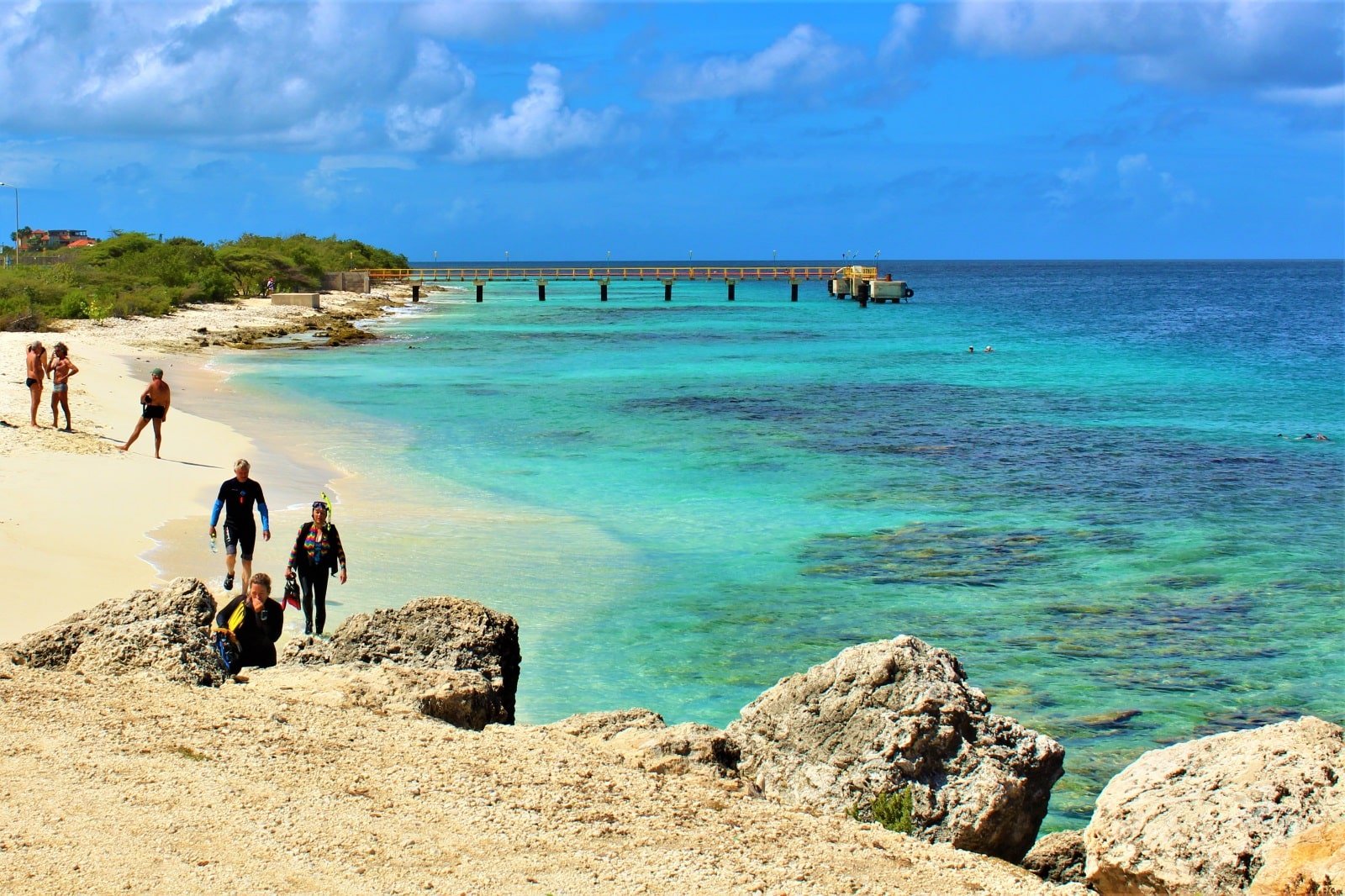
9. Bonaire, Caribbean
Bonaire, part of the Dutch Caribbean, is a pioneer in marine conservation. The island’s surrounding waters are a protected marine park, offering some of the best diving and snorkeling experiences in the Caribbean. Sustainable practices on land and sea make Bonaire a top choice for eco-friendly island travel. Visitors can enjoy activities like windsurfing, kitesurfing, and exploring the island’s unique flora and fauna.
Insider’s Tip: Try windsurfing or kitesurfing in Lac Bay, known for its ideal conditions.
When To Travel: Visit year-round, with the best diving conditions from April to October.
How To Get There: Fly to Flamingo International Airport on Bonaire from the United States, Europe, or other Caribbean islands.
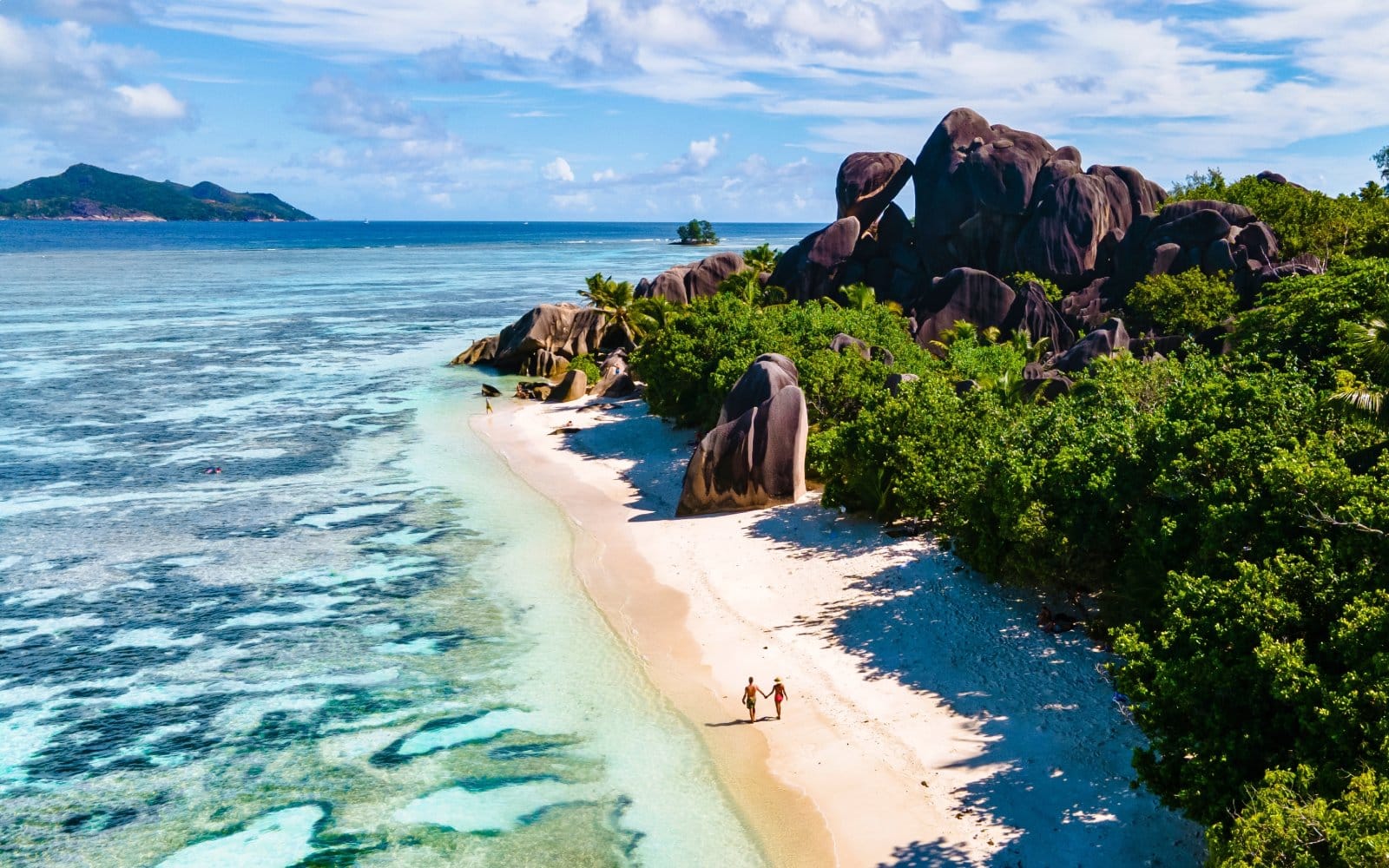
10. Seychelles
The Seychelles, an archipelago in the Indian Ocean, is a leader in environmental conservation. The islands offer stunning beaches, coral reefs, and nature reserves. Sustainable tourism practices here include eco-lodges, marine conservation projects, and guided nature tours. The Seychelles’ commitment to preserving its natural and cultural heritage makes it an ideal destination for responsible travelers.
Insider’s Tip: Visit Vallee de Mai on Praslin Island, a UNESCO World Heritage Site, to see the rare Coco de Mer palm.
When To Travel: April to May and October to November offer calm seas and pleasant weather.
How To Get There: Fly to Seychelles International Airport on Mahé Island from major international hubs.
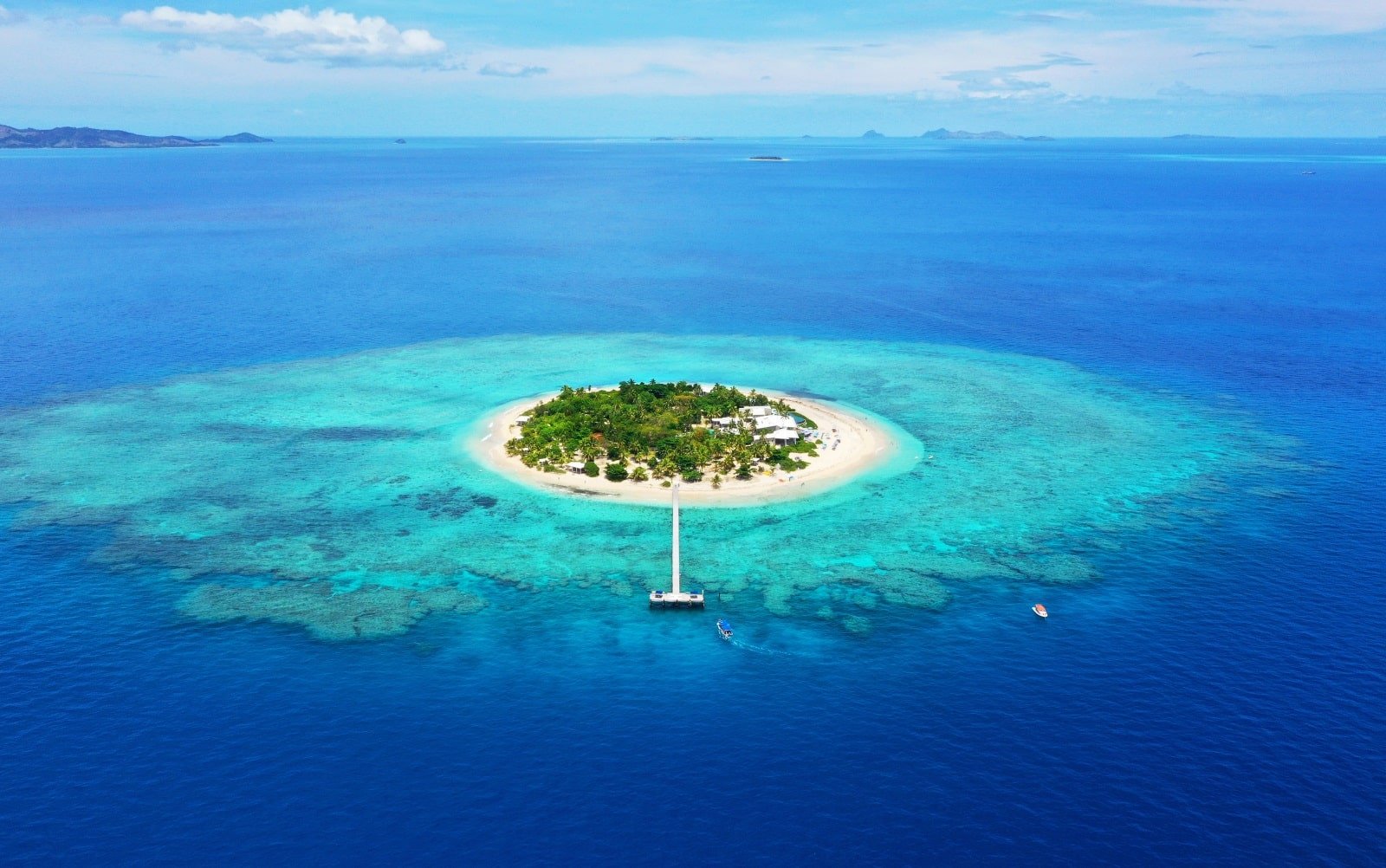
Fiji, an archipelago in the South Pacific, is renowned not just for its breathtaking coral reefs and warm hospitality but also for its dedication to sustainable tourism. The islands are a paradise for eco-conscious travelers, offering a variety of eco-friendly resorts and activities that range from diving in vibrant coral reefs to engaging in cultural tours and participating in conservation initiatives.
Fiji’s commitment to sustainable practices ensures that your visit contributes positively to the local communities and the preservation of the environment. The islands’ lush landscapes and clear waters provide the perfect setting for various activities, including kayaking, snorkeling, and exploring traditional Fijian villages. Engaging with the local community and participating in environmental conservation projects offer a deeper understanding and appreciation of Fiji’s natural beauty and cultural richness.
Insider’s Tip: Participate in a reef conservation project for a hands-on experience in marine preservation.
When To Travel: The best time to visit is during the dry season, from May to October.
How To Get There: Fly to Nadi International Airport on Fiji’s main island, Viti Levu.
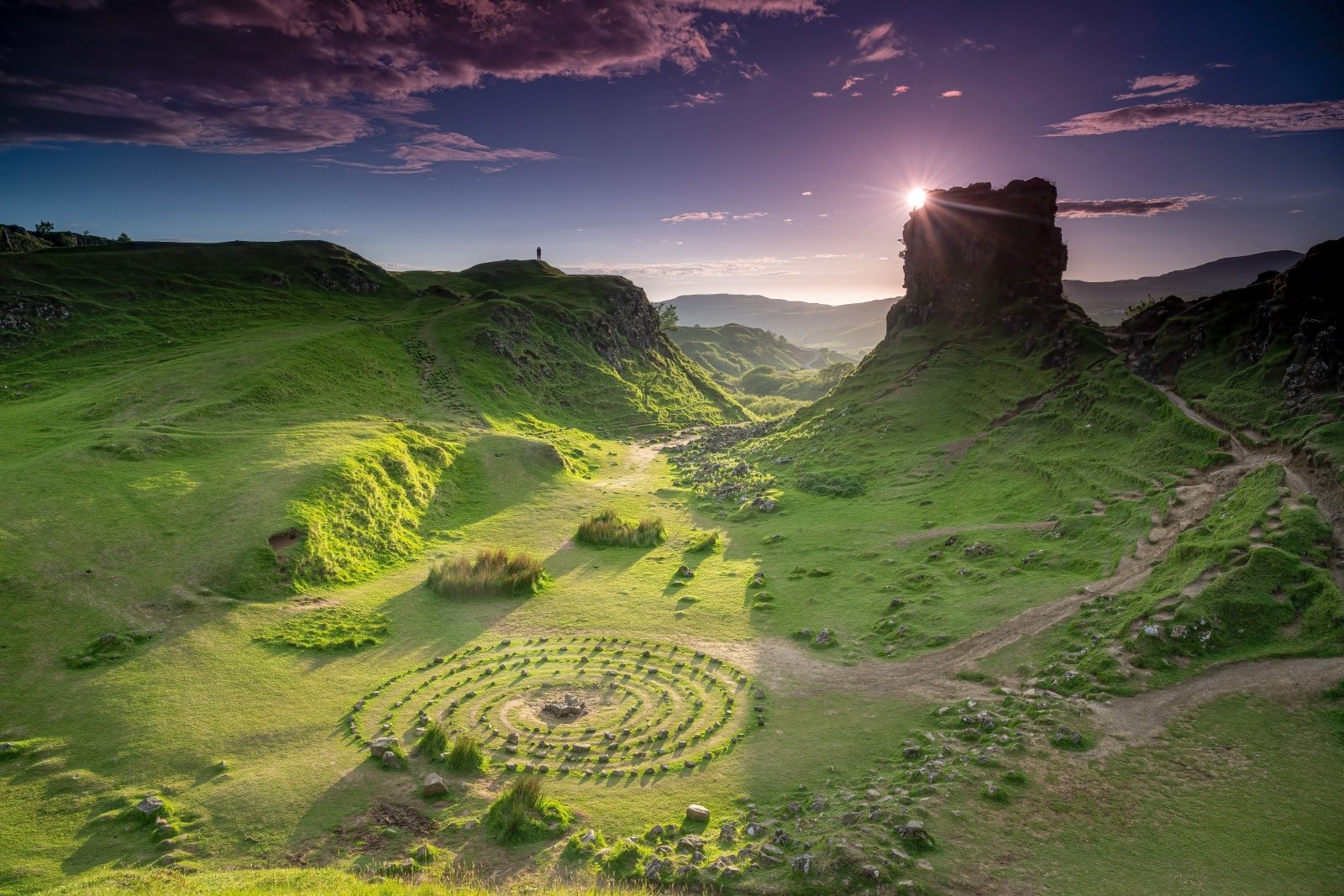
12. Isle of Skye, Scotland
The Isle of Skye, located off the west coast of Scotland, is a destination that captivates with its dramatic landscapes and rich cultural heritage. Known for its rugged coastlines, mystical mountain ranges like the Cuillins, and historical sites such as medieval castles, Skye is a haven for outdoor enthusiasts and history buffs alike. The island’s commitment to eco-friendly tourism is evident in its sustainable accommodations and practices that aim to preserve the natural environment.
Visitors can immerse themselves in the island’s beauty through activities like hiking, wildlife watching, and exploring the local folklore and traditions. The Isle of Skye’s enchanting scenery, from the famous Fairy Pools to the Old Man of Storr, offers endless opportunities for sustainable exploration and adventure.
Insider’s Tip: Visit the Fairy Pools, a series of clear, cold pools and waterfalls in the Cuillins.
When To Travel: May to September offers the best weather for outdoor activities.
How To Get There: Drive or take a bus from mainland Scotland to the Isle of Skye.
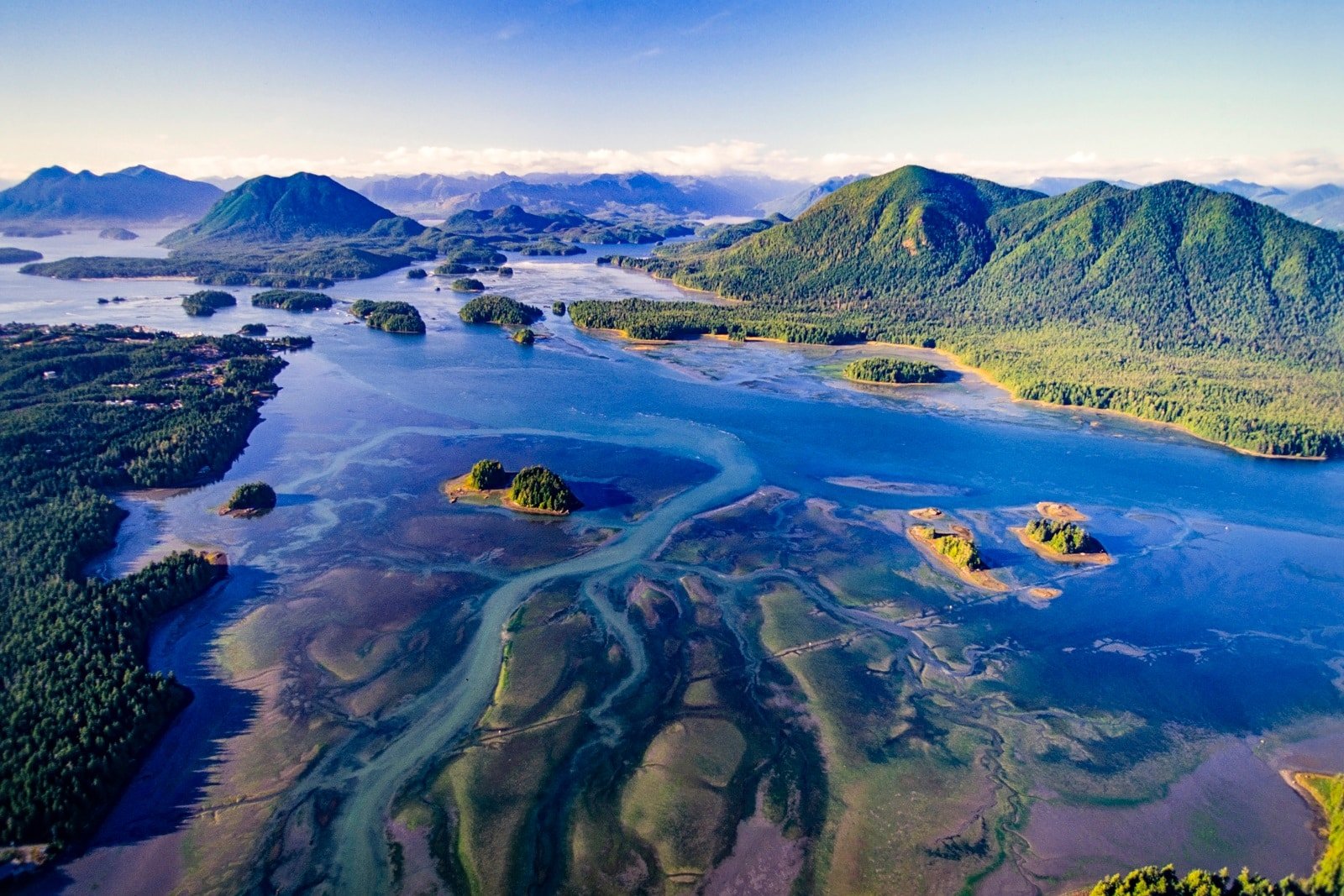
13. Vancouver Island, Canada
Vancouver Island, off Canada’s Pacific Coast, is a diverse ecosystem ranging from temperate rainforests to rugged beaches and mountainous terrain. The island is a model for sustainable tourism, offering a range of eco-friendly activities and experiences. Visitors can explore ancient forests, such as those in Cathedral Grove, go whale watching in the Pacific waters, or learn about the rich indigenous cultures of the island.
Vancouver Island’s commitment to environmental stewardship is evident in its conservation efforts and promotion of sustainable practices among local businesses and communities. The island provides a perfect blend of adventure and relaxation, with opportunities for hiking, kayaking, and enjoying the local culinary scene while focusing on ecological responsibility.
Insider’s Tip: Explore the island’s west coast for incredible wildlife viewing, including bears and whales.
When To Travel: Visit from June to September for the best weather and wildlife viewing.
How To Get There: Fly to Victoria International Airport or take a ferry from Vancouver.
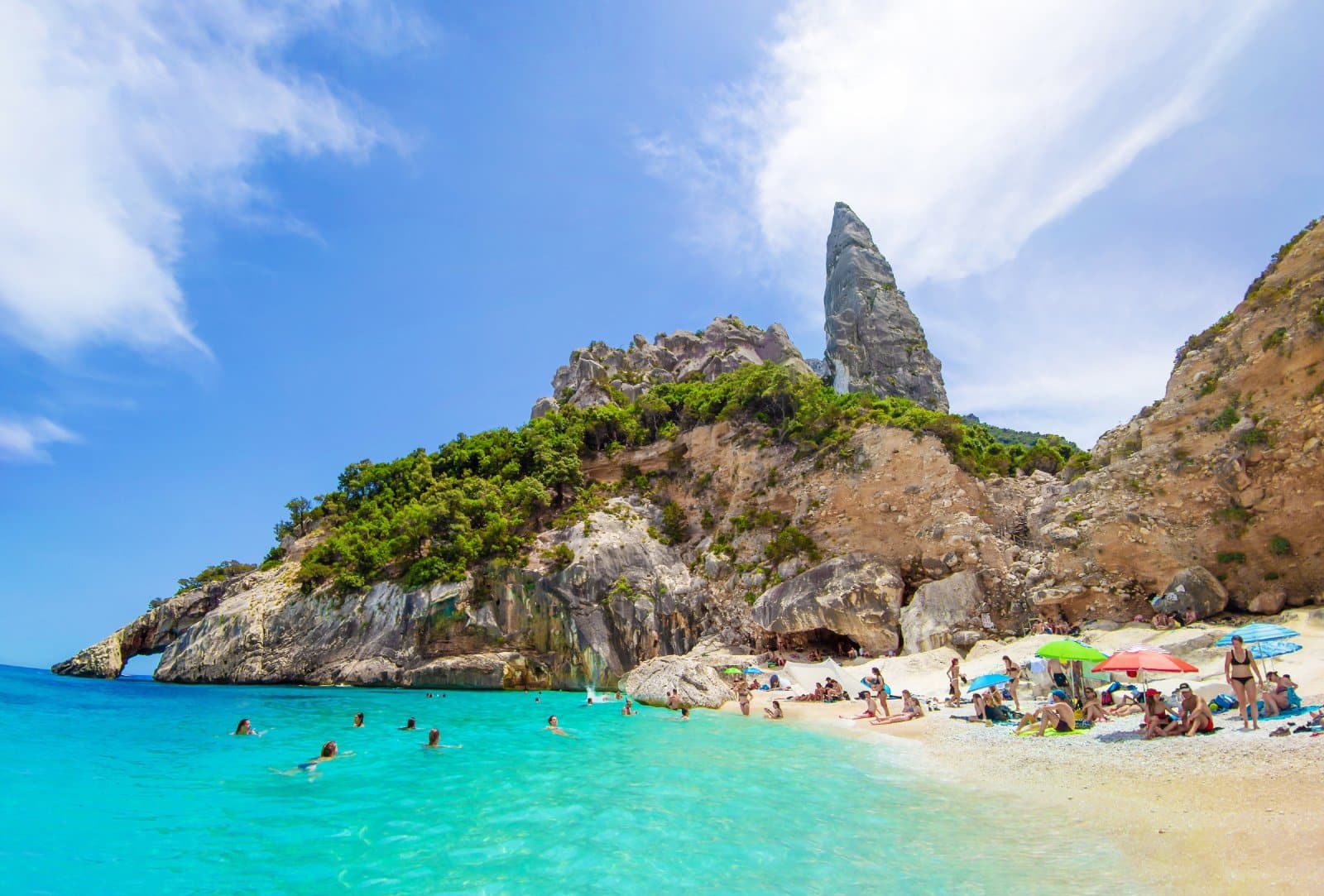
14. Sardinia, Italy
Sardinia, nestled in the Mediterranean Sea, is an island that offers more than just stunning beaches and crystal-clear waters. It is where the preservation of natural landscapes and cultural heritage is paramount. Visitors to Sardinia can enjoy sustainable agritourism, explore archaeological sites like the Nuraghe, and hike in the island’s rugged interior.
The island’s approach to tourism balances enjoyment with conservation, ensuring its beauty is maintained for future generations. Sardinia’s diverse landscape, from the Costa Smeralda to the mountainous Barbagia region, provides a range of activities for travelers, including horseback riding, wine tasting, and discovering the unique traditions and crafts of the local communities.
Insider’s Tip: Visit the Nuraghe, ancient megalithic edifices, to glimpse Sardinia’s past.
When To Travel: April to June and September to October offer pleasant weather and fewer crowds.
How To Get There: Fly to Cagliari, Olbia, or Alghero airports from major European cities.
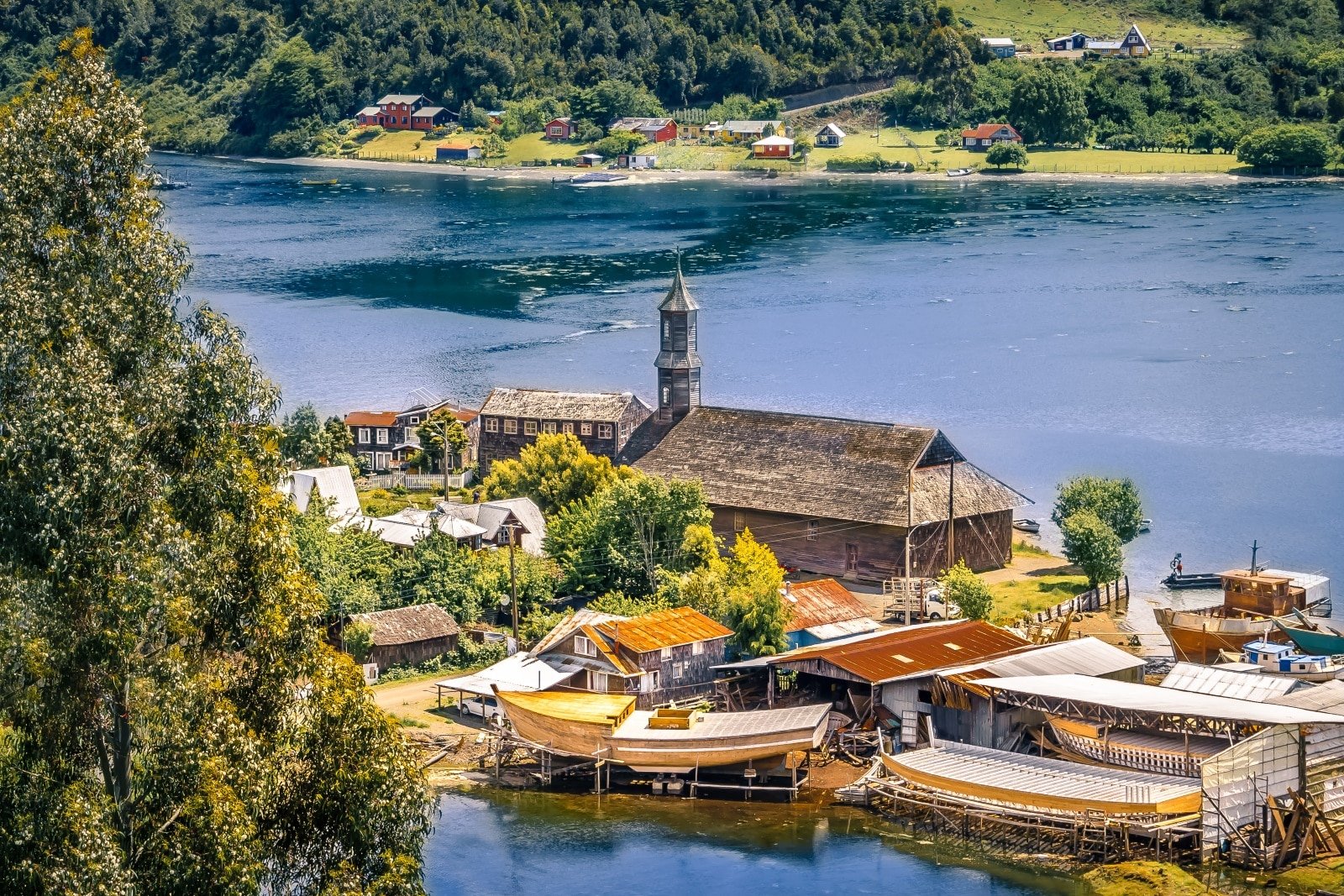
15. Chiloé Island, Chile
Chiloé Island, located in the southern region of Chile, is where myth and tradition blend seamlessly with the natural environment. Known for its distinctive wooden churches and rich folklore, Chiloé is committed to sustainable tourism practices. The island’s cultural heritage is deeply connected to its natural surroundings, offering visitors a chance to experience both.
Eco-friendly accommodations and activities such as bird watching, hiking, and exploring the island’s national parks are popular among travelers. The island’s cuisine, particularly its seafood and unique dishes like curanto, reflects its sustainable relationship with the sea and land. Chiloé’s rolling hills, dense forests, and coastal landscapes provide a tranquil setting for a sustainable and culturally enriching getaway.
Insider’s Tip: Try curanto, a traditional Chilote dish, to taste local cuisine.
When To Travel: The best time to visit is during the summer months of December to March.
How To Get There: Fly to Puerto Montt and then take a ferry to Chiloé Island.
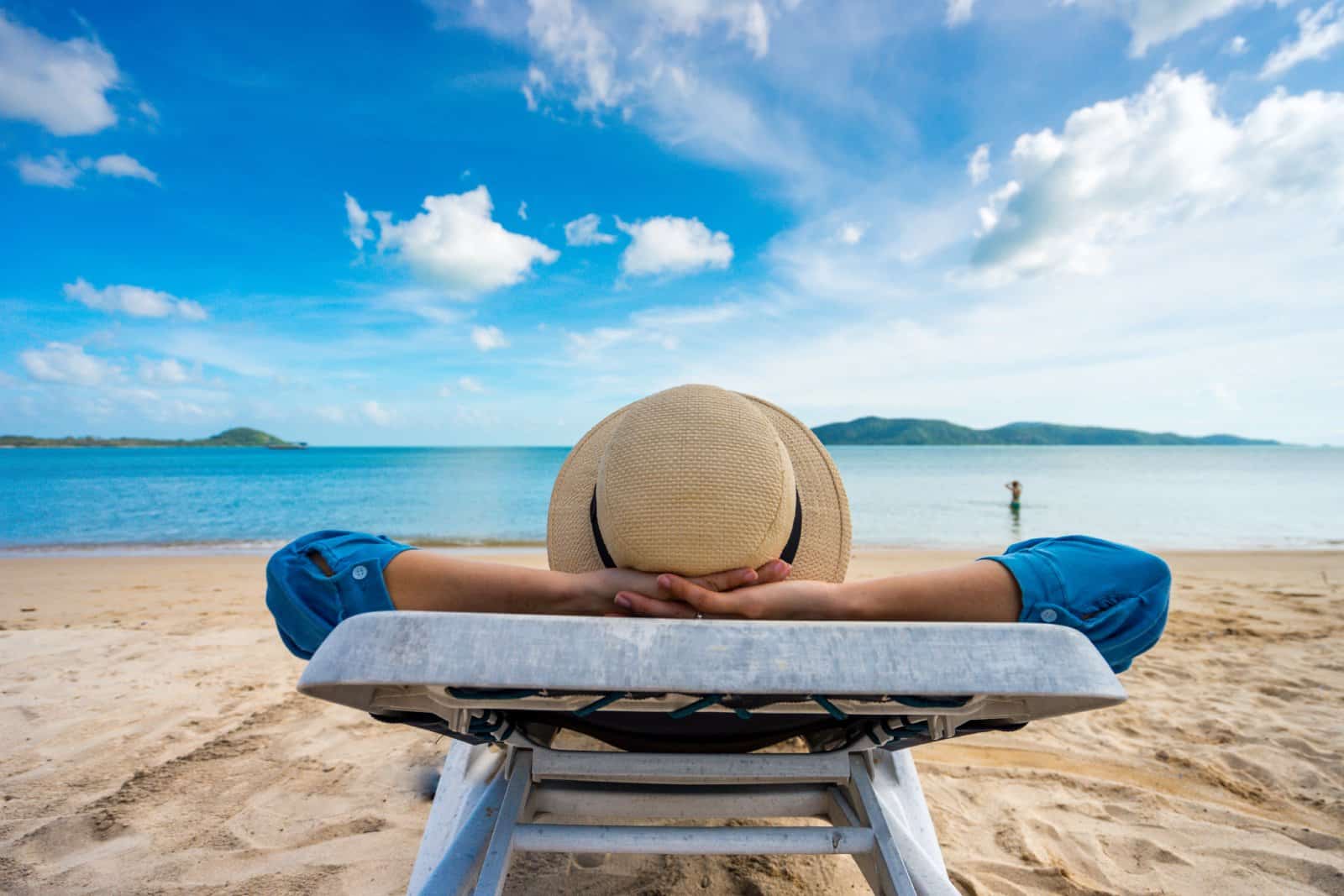
The Bottom Line
Embarking on a sustainable island getaway allows you to responsibly enjoy some of the world’s most beautiful destinations. These eco-friendly islands offer breathtaking natural beauty and a commitment to preserving their environment and culture. Whether you’re snorkeling in Fiji’s coral reefs, exploring the ancient landscapes of Sardinia, or immersing yourself in the unique culture of Chiloé, your journey will contribute to the sustainability of these incredible places. As you plan your next island adventure, remember that your choices can help preserve these paradises for future generations.
More Articles Like This…
Barcelona: Discover the Top 10 Beach Clubs
2024 Global City Travel Guide – Your Passport to the World’s Top Destination Cities
Exploring Khao Yai 2024 – A Hidden Gem of Thailand
The post 15 Eco-Islands 2024 – Sustainable Island Retreats republished on Passing Thru with permission from The Green Voyage .
Featured Image Credit: Shutterstock / Grekov’s.
For transparency, this content was partly developed with AI assistance and carefully curated by an experienced editor to be informative and ensure accuracy.
More for You
NPR Editor's Critical Op-Ed Ignites Debate Over Political Bias in Journalism: 'This Essay Has It Backwards'
New guidelines uphold lifelong competency of surgeons
If You’re Married, Should You File Taxes Jointly or Separately?
Comparison: 2024 Toyota Camry Hybrid Vs 2024 Honda Accord Hybrid
West has 100 Patriots but is unable to transfer 7 which are very much needed - Borrell
Neutral Switzerland joins European Sky Shield defence project
Emily Mariko Just Shared an Easy 3-Ingredient Cucumber Salad—Here's How to Make It
What to Know About Cervical Vertigo (Cervicogenic Dizziness)
Tax Day 2024 Freebies and Deals
Jonathan Nolan Initially Disagreed With Christopher Nolan Over ‘Dark Knight Rises' Villain
Kansas City Chiefs' Rashee Rice facing aggravated assault charge after high-speed crash in Dallas
Why Do People Add Plywood Under Their Countertops, And Do You Need To Do It?
Laughing gas abuse contributed to death - coroner
I'm trying to lose weight and eat healthily. Why do I feel so hungry all the time? What can I do about it?
British company to maintain and repair L119 howitzers in Ukraine
‘Tulsa King' Background Actor Responds To Insults Allegedly Made On Set Of Sylvester Stallone Series: "I Do Feel Like I Was Singled Out"
Terry Savage: Credit card 'bewares'
Fractal pattern identified at molecular scale in nature for first time
Temasek Eyes Rich Family Businesses in $18 Billion Europe Push
Sepsis signature shifts speed of diagnosis

IMAGES
VIDEO
COMMENTS
It was a clear demonstration to the government that tourism has become the dominant force in the Caribbean. In these reports, the Caribbean tourism is expected to get over 56.1 billion dollars economically with about 15% increase in tourism employment from 2007 to 2017.
Tourism Essay on the Caribbean. The overall environmental effects of tourism in the Caribbean involve environmental degradation which hinders sustainability. Environmental effects related to tourism are problematic and may cause irreversible impacts. These environmental effects include urbanization, over exploitation of resources, coastal ...
Tourism In The Caribbean. 1828 Words8 Pages. Tourism is a diverse industry that provides for the elements of the experience individuals have when on recreational time or vacation. Tourism has many levels and encompasses a variety of positions. Individuals working within the field of tourism range in occupation depending upon the level of ...
Tourism is one of the Caribbean's major economic sectors, with 25 million visitors contributing $49 billion towards the area's gross domestic product in 2013, which represented 14% of its total GDP. It is often described as, "the most tourism-dependent region in the world". The first hotel was built on the island of Nevis in 1778 and brought wealthy visitors, such as Samuel Taylor Coleridge.
In addition we know that in this way jobs are provided for locals so the society will be a less poverty one. Tourist comes to the Caribbean for so many reasons for enjoyment, relaxation, the weather and all other factors that include tourist having a wonderful and warmth experience in the Caribbean. BILIOGRAPHY.
Abstract The Caribbean region is highly dependent on tourism. The role of tourism in economic activity in the region increased steadily following the dismantling of the system of agricultural trade preferences in the late 1980s and early 1990s, and the tourism industry has proved to be resilient even as traditional output and export sectors waned. Beginning from a base of about 4 million ...
Without tourism, the Caribbean's would perhaps be unknown territories among the ocean. The three major impacts of tourism in the Caribbean are social, cultural and environmental. Tourism impacts the Caribbean socially by proving jobs and services for the people and and generating a revenue. 2393 Words.
The Environment and Tourism in the Caribbean. Mainly, Caribbean ecological resources are basic and natural, including sand, sun, and the sea. Apart from the sun, the resources are subject to damage and depletion, as threats can arise from both within and outside the region. Typically, the magnitude of damage caused by minor to severe threats ...
Introduction. George Gmelch takes an interesting view of tourism, not as done by most others. When tourism is discussed, the tendency is to focus on the physical attributes of the destination: clean beaches, glorious sunsets, breathtaking scenery- or on the tourists themselves. There is very little attention paid to the locals who are normally ...
Environmental and Economic Impact of Tourism in the Caribbean. Introduction. Tourism is a thriving sector in the Caribbean thanks to the appealing waters, beaches, warm climate and its scenic environment. However, this economic sector has brought about both a negative and positive impact affecting the region economically, socially, and even ...
Without tourism, the Caribbean's would perhaps be unknown territories among the ocean. The three major impacts of tourism in the Caribbean are social, cultural and environmental. Tourism impacts the Caribbean socially by proving jobs and services for the people and and generating a revenue. Free Essay: This paper explores a great number of ...
Factors That Attract Tourist To The Caribbean Tourism Essay. It is considered to be the most important aspect of the hospitality industry, to demonstrate high levels of quality service. The hospitality industry emanates from the principle that the customer needs to be treated with priority, and should see incomparable value in the service ...
of tourism literature with the keen commentary of a layperson tourism 'Observer'. Jamaica, located in the Northern Caribbean, is the largest of the English-speaking and the overall third ...
The relationship of tourism to the economy of Caribbean countries can be described as developing. The Caribbean is seen as the most tourism dependent region in the world, with the tourism sector contributing to 36% of the GDP (Caribbean Region: Tourism, n.d.). There are over 900,000 persons directly and indirectly employed to tourism industry ...
Caribbean Travel and Tourism (HM321) Name: Dondre Fawkes. Student #: 620023009. Lecturer: Ms. Mackay. Negative environmental impact of tourism in the Caribbean. Coastal and Marine Resources. The overall environmental effects of tourism in the Caribbean involve environmental degradation which hinders sustainability.
Tourism has long been the primary industry on the majority of the Caribbean islands due to the largely incredible natural beauty and wildlife which attracts hoards of "vacation hungry" visitors all year long." (Sophia Southern, n.d.). Tourism accounts for a large amount of the Caribbean's economy and work force.
The United States constitutes the main tourist market for the larger Caribbean countries, including those of the Hispanic Caribbean, the Dutch West Indies, the French West Indies and the US territories, and accounts for 53% of the total number of tourist arrivals followed by Europe (23%). Intra-Caribbean tourism represents 6% of the total.
Tourism and the physical environment of the Commonwealth Caribbean: (a) resort development and its effect on the aesthetic value of the local environment; (b) changes in ecology, reefs and tidal patterns caused by land reclamation, sewage disposal, and pollution of water bodies - ocean, sea, rivers;
Therefore, Caribbean tourism represents what sugar signified over a century ago - a monocrop product, controlled by foreigners and a few elites for the maintenance of global capitalism. Within the tourism industry the capitalist system expands by accessing to cheap labor, land, resources, and markets in the Caribbean.
Abstract. This study examines current trends in tourism and agriculture in Caribbean countries and. the strategy for linking them in order to facilitate their future development. The tourism industry. has, in the past, developed largely apart from other sectors such as agriculture.
The research topic of this paper is Sustainable Development of the Caribbean's tourism industry through proper environmental planning. The research question is the Caribbean's vulnerability and its ability to survive within a global landscape is an ongoing concern. Research was conducted via the internet and articles.
Agri-tourism needs backing from government, and in order to maximise local benefit, agro-tourism projects should be community-based. Much of the tourism development in the Caribbean is geared towards luxury hotels and all-inclusive enclave resorts where guests need never leave (see this recent article) - forms of development which often give ...
Tourism In The Caribbean Essay. 1682 Words4 Pages. Again, tourism is the most important industry in the Caribbean region, especially in that case, when it brings the most impact to the economy, it creates a big money flow, gives a opportunity for locals to be employed, also it is the major intermediary in international trade; at the same time ...
Dominica stands out in the Caribbean for its commitment to eco-tourism. Known as the "Nature Island," it boasts lush rainforests, hot springs, and a rich array of wildlife.
NEWS UPDATE APRIL 10th,2024